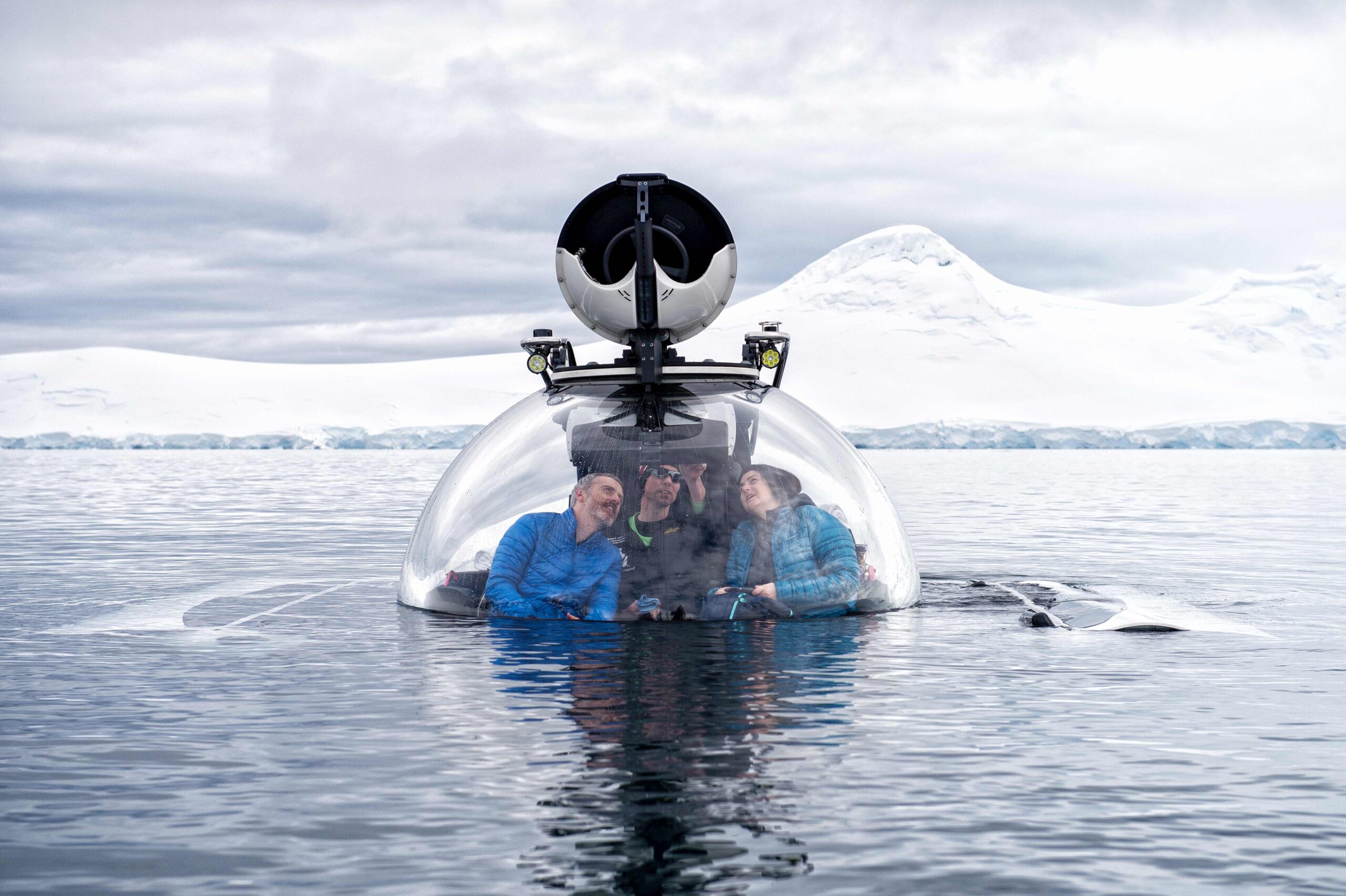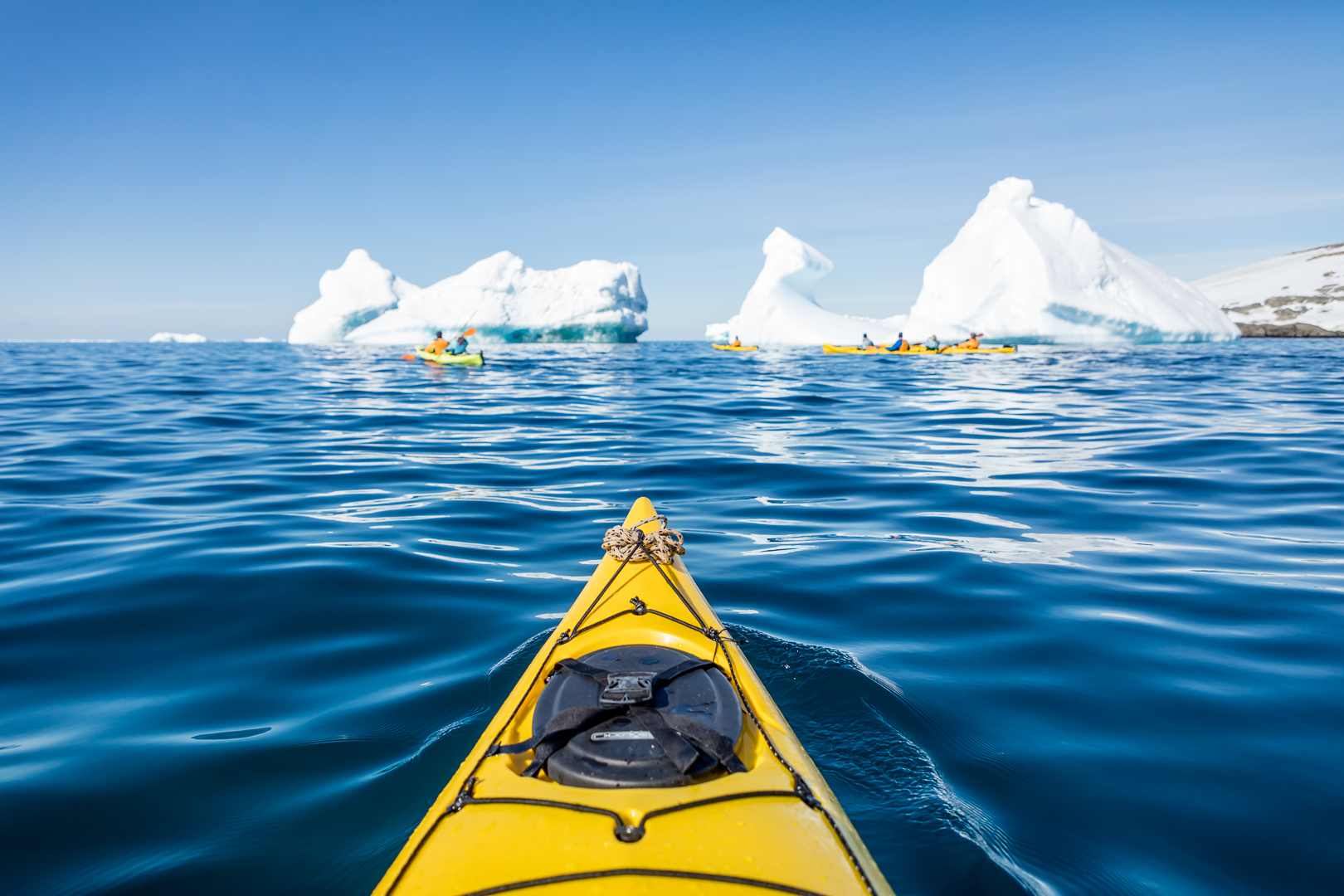Less than a century ago, Antarctica was the domain of heroic explorers and enterprising whalers. Today, reaching the “last continent” still entails many challenges that demand competence and hard-won expertise, but the options to explore are far wider. The rewards are just as amazing.

- Peninsula Cruising by Expedition Superyacht
Sculpted icebergs, expanses of pack ice, vast glaciers, and snow-clad mountains provide the most impressive and wild scenery on the planet. During the polar summer (November – March), penguins breed on the coast while seals and whales feed in the abundant waters. The peninsula, the most accessible and visited part of the continent, has it all. The many coves and bays are best accessed by expedition yachts, allowing for deep exploration without sacrificing comfort. EYOS pioneered expedition superyacht voyages to the Antarctic and uses a vast collective knowledge to unlock this world to any intrepid traveler.

- Grand Traverse by Overland Vehicle
The Geographic South Pole is perhaps the most iconic and exclusive prize for any traveler. We go a step further and undertake a full Grand Traverse (coast to coast) of the Antarctic Continent. Join this once-in-a-lifetime private expedition to journey overland from the Weddell Sea, to the South Pole, and onto the Ross Sea in custom all-wheel drive vehicles. Driving across Antarctica is a very rare and unique experience that provides the opportunity to experience stunning vistas, the vast expanse of the polar plateau, and the rich history of those who sledded and skied before us.

- Camping in the South Pole Interior via the Ice Blue Runway
Maybe glamping is more your speed. If it is, you can depart Punta Arenas on a 4-hour flight aboard a Boeing 757 twin-jet, to arrive at the Union Glacier blue-ice runway. From there quickly transfer to Three Glaciers Retreat, an exclusive retreat tucked deep in the Antarctic interior, which is a gateway to towering snow-covered peaks that rise in all directions, offering unlimited opportunities for scenic walks, fat tire bike rides, and ski tours. Despite the extreme location, the atmosphere here is relaxed and welcoming. Guests stay in luxury double-walled sleeping tents that are roomy and comfortable. They are well suited to Antarctic conditions and are based on a design used by Shackleton’s Endurance expedition. Each tent houses two guests and you sleep in your polar sleeping bag with a mattress, pillow, and linens. The tents are naturally heated by the 24-hour sunlight and interior temperatures range from 25°F – 68°F (4°C – 20°C).

- Heli-skiing Virgin Peaks
EYOS pioneered heli-skiing in Antarctica, providing unparalleled access to prime ski terrain. In the company of expert guides, heli-skiing or ski touring allows you to ski from summit to sea on wide, treeless snowfields and down steep couloirs flanking glacier-sculpted peaks. Here, there are no lifts and no lines. Carve tracks where few have or will—from heights overlooking iceberg-choked bays and granite landscapes.

- Exploring the Alien Underwater World in a Submersible
Submersibles enable guests to explore reefs and observe wildlife from the surface down to the current general recreational limit of 1000m. While some are purely recreational, others are capable of ‘citizen science’ and genuine exploration. The top-of-the-line subs offer seating for three (pilot plus 2), a full sphere of crystal-clear acrylic for 340-degree viewing. Though most assume the waters of Antarctica are desolate, a submersible dive proves that the opposite is true; below the water’s surface, there is an entire dazzling world of bizarre biodiversity to be discovered.

- Sailing the Reaches of The Ross Sea
The Ross Sea is the most remote, pristine, and majestic area of the entire Antarctic coastline. Protected by distance, latitude, and a vast band of sea ice, the Ross Sea remains as iconic and challenging a destination as it was to Scott, Shackleton, and Amundsen over a century ago. To voyage here is to follow in the footsteps of the giants of polar exploration and for the very same reason; it is the southernmost point a vessel can reach; and the closest coastline to the South Pole. Crossing the Southern Ocean for 5 to 6 days from either Australia or New Zealand allows those voyaging to transition gradually between summertime Australia and the polar climate of Antarctica. Albatross and seabirds, whales, icebergs, and the polar convergence all serve to mark the dramatic and exciting pathway to Antarctica.
